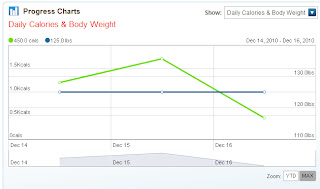My name is Jeremy West. I am a physical education teacher at JTS High School. I recently became involved in the Speed Stacks Ambassador Program. I work with about 50 children at the local recreation center teaching the art of Sport Stacking and cannot tell you how popular it is becoming. The children love it, and it is a great way to promote not only physical benefits but cognitive and affective benefits as well.
Let me tell you a little about Sport Stacking. It was invented by a physical education teacher named Bob Fox. In a nutshell, the objective of Sport Stacking is to stack cups into certain patterns as quick as you can. It may not sound too special if you never stacked before, but there are a lot of benefits to Sport Stacking.
Hand-eye coordination, reaction time, and speed are three components of skill-related fitness that are developed through Sport Stacking. A study done by Dr. Steven R. Murray, Brian Udermann, John M. Mayer, and Kenneth Sagendorf has shown that Sport Stacking is an effective way to improve both hand-eye coordination and reaction time. Another thing Sport Stacking develops is bilateral coordination. The use of both hands is essential to a quick stack. Chris K. Rhea, Kathy Ludwig, and Monique Mokha conducted a study that has shown Sport Stacking may lead to better development of bilateral coordination. Sport Stacking is a good way to maintain overall fitness as well. There are numerous games that incorporate cardiovascular and aerobic exercise. The possibilities are truly endless with Sport Stacking!
I mentioned previously that Sport Stacking is beneficial to other domains besides the physical. It is known that Sport Stacking activates both sides of the brain. Dr. Melanie Hart examined the electrical activity in the left and right hemispheres of the brain during Sport Stacking, and she concluded, “The results of this study support the claim that Sport Stacking does utilize both sides of the brain.” By utilizing both sides of the brain, it also develops them as well. The left side of the brain is responsible for logic, mathematics, language, and analysis to name a few. The right side of the brain is responsible for things such as creativity, feelings, intuition, and imagination. One of the biggest benefits for these children that Sport Stacking contributes to is self-esteem. It allows children that may not be athletic to participate and be good at it. These children now have the opportunity to compete with their peers that are athletic thus resulting in higher self-esteem. All of these characteristics would help these children in all aspects of school.
Sport Stacking is not your traditional unit in physical education class. It is different and kids love to try new things. Sport Stacking is the perfect opportunity to bring about change to the physical education program and start a new PE. Different activities, like Sport Stacking, will make physical education class fun for everyone and not just the kids who love sports. The physical education program needs change, and Sport Stacking will lead that change.
If you are skeptical about Sport Stacking, the leader in Sport Stacking, Speed Stacks, has a program for schools to borrow the necessary equipment for free. Please grant us this opportunity to bring about change in our physical education program. Thank you for your time.
Sincerely,
Jeremy West
Sport Stacking Presentation
View more presentations from coachjeremywest.





